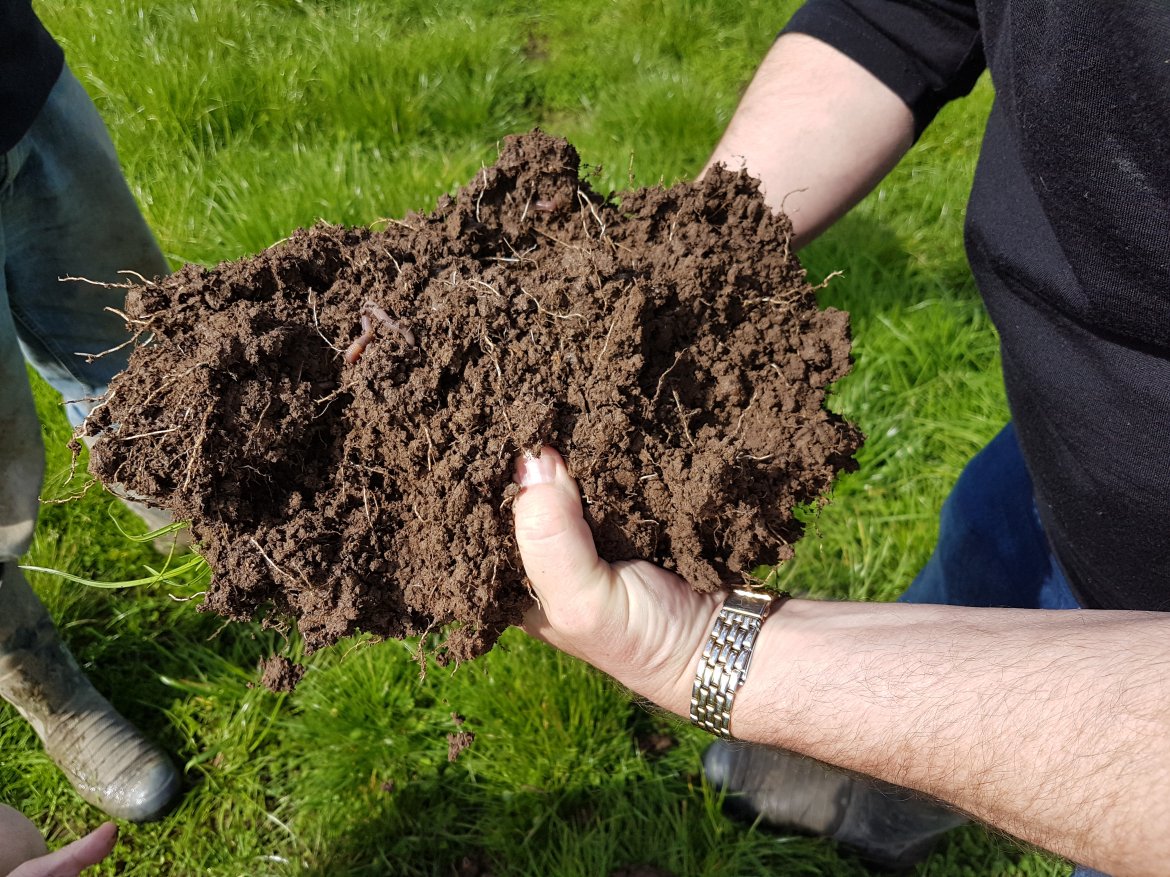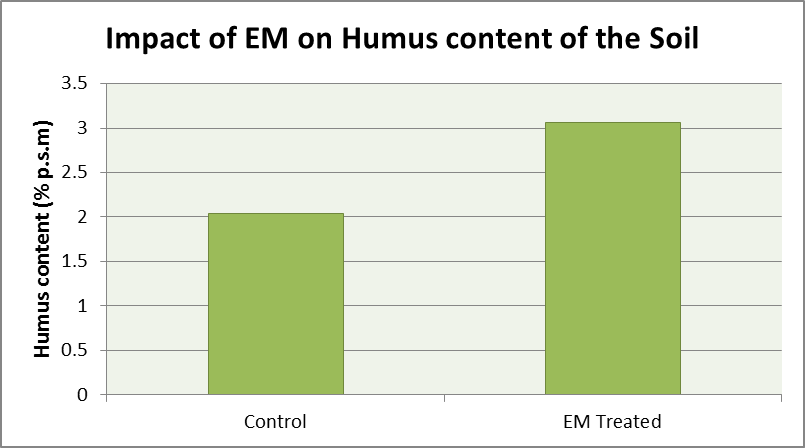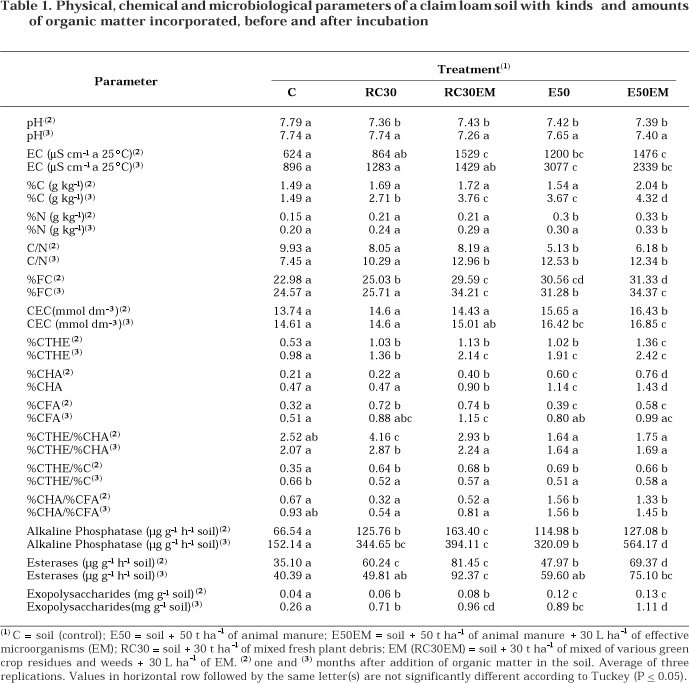EM is carbon builder rather than a carbon burner as such it can have a dramatic impact like all soil microbes on Carbon Sequestration. Using EM in soils increases organic matter, fertile topsoil is rich in soil organic matter. Soil organic matter (SOM) is formed by the biological, chemical and physical decay of organic materials on the surface and below the soil. This is made up of plant and animal residues at various stages of decomposition, cells and tissues of soil organisms, and substances produced by soil organisms. Soil organic matter is a vital part of our soils and helps soils hold onto water and nutrients and supports and provides food for soil microbes that recycle nutrients. Soil organic matter is also a huge source of carbon and part of the largest store of carbon on the planet – the soil, where stable carbon is retained as humus for over 35 years. If we could build rather than lose humus in farmland and gardens we would be capturing carbon that otherwise would cycle to the atmosphere.
Adding and increasing SOM in our soils is especially important for building humus. Humus is dark, organic material that forms in soil when plant and animal matter decays. Put simply Humus is the biologically active or living fraction of soil carbon. Humus has many benefits one of the most important is that Humus holds its own weight in water. In addition humus stores nitrate nitrogen stopping it from leaching, increases the soils cation exchange capacity (CEC) and stores C (sequesters) from the atmosphere.
How EM improves the recycling of carbon and humus building in the Soil
An increase in organic matter in farmed soils of just one per cent represents sequestration of more than half of our yearly CO2 emissions – more than enough to reverse global warming. Adding EM to the soil does many things but most importantly it quickly increases organic matter levels in soils by enhancing the decomposition process of organic materials, and during fermentation will produce normally unavailable organic acids, such as lactic acid, acetic acid, amino acid, malic acid and bioactive substances and vitamins. These substances stimulate native microorganism populations and are also known to promote plant cell division (growth).
 Secondly the diversity of microorganisms contained in EM and the metabolites they produce will increase the number and diversity of microorganisms in the soil. When microorganisms are activated, protozoans and larger organisms such as worms will increase in number and a healthier ecosystem will result. This also plays an important role in SOM recycling and building humus as a full range of organisms in the soil food web is required for this complex process.
Secondly the diversity of microorganisms contained in EM and the metabolites they produce will increase the number and diversity of microorganisms in the soil. When microorganisms are activated, protozoans and larger organisms such as worms will increase in number and a healthier ecosystem will result. This also plays an important role in SOM recycling and building humus as a full range of organisms in the soil food web is required for this complex process.
EM will also prevent the production of ammonia during protein decomposition, metabolizing proteins in such a way that amino acids are produced instead. These amino acids can be directly absorbed by plants. Also, under normal circumstances, cellulose will be decomposed and broken down to form carbon dioxide. However, due to the fermentation action of EM, low-molecular polysaccharides will be produced and these will be absorbed by microorganisms and plants. Polysaccharides (repeating units of sugar-type molecules connected in longer chains) promote better soil structure through their ability to bind inorganic soil particles into stable aggregates. Some sugars may stimulate seed germination and root elongation. Other soil properties affected by polysaccharides include CEC, anion retention and biological activity.
EM efficiently breaks down organic matter into stable humus, a key component to aggregate formation, by reducing oxidative forces that primarily rob the soil of Carbon and Nitrogen in the form of methane and ammonium gases, respectively. This is achieved from a reduction of available Hydrogen ions due to a favourable change of organic acid composition and concentration in the soil. The result is that a greater amount of organic matter is converted to humus, aiding in aggregate formation.
Trial Data
In this trial published in the European Journal of Agronomy (vol. 46, April 2013), they looked at Long-term effective microorganism’s application to promote growth and increase the yield of rice. This trial, conducted over 11 Years, found that the long-term application of EM caused significant changes in soil physical-chemical properties (Table 1). Soil organic matter, total N, alkaline-hydrolysable nitrogen, and available K content was significantly (p < 0.05) higher in the two compost plots than in the control plot, with the EM treatment outperforming the traditional compost in all facets. See the table below.

 A Polish trial (Filarski, 2016) from the Złotów district looked at the impact EM has on the humus content of the soil. EM was applied on crop residues (straw 100% ploughed) over three years of application. This treatment was across 50 hectares with a large control area. After 3 years soil was tested for the humus content (sample 1 - EM, sample 2 - control).
A Polish trial (Filarski, 2016) from the Złotów district looked at the impact EM has on the humus content of the soil. EM was applied on crop residues (straw 100% ploughed) over three years of application. This treatment was across 50 hectares with a large control area. After 3 years soil was tested for the humus content (sample 1 - EM, sample 2 - control).
In Spain a trial published in the Brazilian Society of Soil Science Journal (vol.27, May/June 2003) and conducted in Madrid, evaluated the properties of a clay loam soil enriched with organic matter and microorganisms under controlled temperature and moisture conditions, over a period of three months. In this trial the conclusion was drawn that the incorporation of a mixture of effective microorganisms (EM) intensified the biological soil activity and improved physical and chemical soil properties, contributing to a quick humification of fresh organic matter.

Source link













